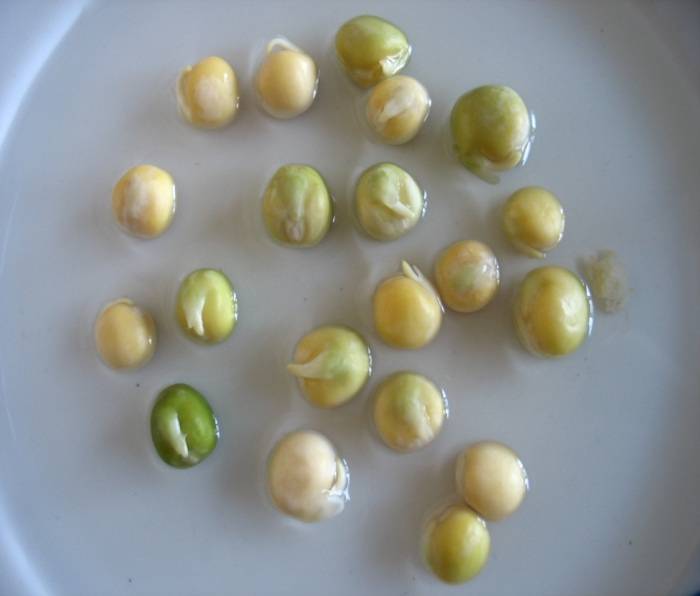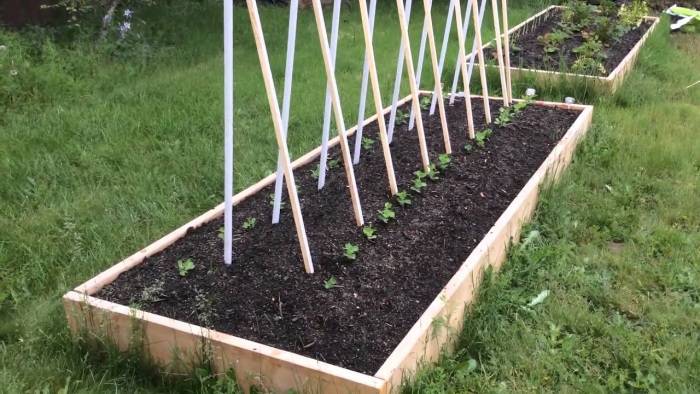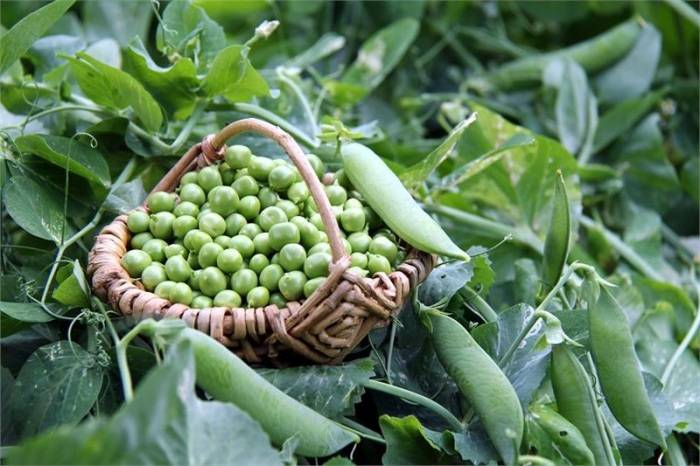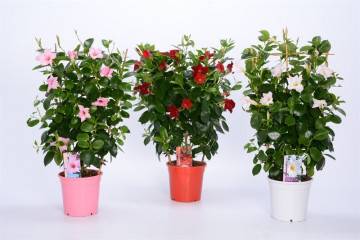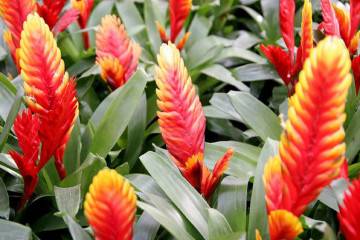Gloriosa peas - growing peas at home
Content:
Green peas have been familiar to mankind for 5000 years. Its cultivation began in China. Dishes with this agricultural crop, both dried, frozen, and canned or fresh, are gaining more and more popularity. Peas can grow in many climates, even cold ones. And one of the best varieties to grow is Gloriosa peas.
Description of the vegetable variety
This pea variety is rich in the following beneficial micronutrients:
- ascorbic and folic acid;
- vitamins B6, K, A, C;
- phosphorus;
- copper;
- manganese;
- thiamine;
- riboflavin.
It also contains dietary fiber to aid digestion. Peas are free of cholesterol and saturated fat. It is rich in proteins, therefore it is useful in dietary nutrition.
Description of the Gloriosa sugar pea variety:
- refers to the shelling varieties, that is, only grains are used for food, and not the whole pod, as in sugar varieties;
- one of the fastest ripening pea varieties. It ripens in 45-60 days depending on the region;
- it can be grown both on an industrial scale and in your summer cottage. The variety is high-yielding, it can yield up to 50 tons per hectare. Up to 1.5 kg of useful product is harvested in a 1 m² garden;
- plant height 50-70 cm;
- a pod (bob) of an oblong shape, reminiscent of a saber. The top of the bean is pointed. When fully ripe, they are dark green in color. The pods are 9 cm long. The number of peas in a pod is 7-9;
- like other types of peas, it belongs to annual plants;
- seed germination over 90%;
- peas are high in protein.
The pods ripen together, so for a step-by-step harvest, it is better to sow peas in several stages.
Gloriosa vegetable peas can be used for the following purposes:
- consume raw. To do this, the pods are harvested at the stage of milky maturity, then the peas will have a delicate sweetish taste that even a child will appreciate;
- this variety is grown for canning on an industrial scale. Gloriosa canned peas, pleasant to the taste, will decorate the traditional salad "Olivier";
- collected and not eaten peas can be frozen, they are well stored. The taste qualities of this vegetable crop are preserved even when thawed.
Gardeners and farmers who have come across this variety of peas note that they will continue to plant it. In the reviews, they point to unpretentious cultivation, good immunity to diseases and high seed germination.
Information about seeds: germination time, storage, characteristics, tips
Sometimes there is little space left on the garden plot, and the summer resident does not know what else to plant such a compact one. Healthy green peas are a good option. A small support will be enough for this vegetable crop to cling to its antennae. The Gloriosa variety is unpretentious, but there are some nuances when growing it.
How and when to plant Gloriosa sugar peas
Gloriosa loves the sun and does not tolerate drafts. Therefore, the place for the future plot with peas should be quiet, windless, well warmed up and illuminated. Loamy and sandy loam soil types are the most suitable for Gloriosa.But the variety will calmly germinate on saturated black soil.
Before planting any kind of peas, you need to properly prepare the soil. They begin to do this in the fall. It is necessary to carefully dig up the ground at the site of the future beds with peas. All residues of weeds and vegetable crops growing there, including roots, are removed. After loosening, a complex fertilizer is applied or just such a mixture: 20 g of superphosphate, 20 g of potassium sulfate and 3 kg of manure or humus. After a day, the soil needs to be dug again. You can also treat the soil with lime, 250 g / m².
Only whole seeds are suitable for seed. Before planting in the ground, they must be germinated. You must first prepare a container in which the peas will germinate. This can be, for example, a plate with a cotton cloth soaked in moisture.
Before planting, the seeds are briefly placed in a warm place. Warmed peas 10 min. incubated in a solution of 1 g of boric acid per 5 l of water. Instead of boric acid, you can use ready-made growth stimulants such as zircon, epin, etc.
After processing, the seed is transferred to a prepared container with a damp cloth and left for a day. The peas should swell slightly. Before sowing, you can carry out another treatment, but now with a fungicide against fungal diseases.
Gloriosa is planted when the ground is already warming up well (from the second half of April). In the northern regions, sowing is carried out even later, in May. The optimum temperature for germination is at least 8 ° C.
The distance from the surface for peas to grow varies depending on the type of soil:
- in loamy and other dense earths, a pea is placed no deeper than 4 cm;
- in black earth and other medium-dense soil - 6 cm;
- in sandy loam and other loose soils - 8 cm.
Landing grooves are made exactly to the above depth. The distance between the pea beds should be at least half a meter. Ash and compost added to a pre-prepared furrow will help increase the yield. Before planting, the soil must be well shed with water.
The peas are laid out in the hole at intervals of 6 cm.
Growing peas at home
It doesn't take much effort to grow Gloriosa on a windowsill. This variety grows well in an ordinary home. First, the material is prepared for sowing. Peas older than 3 years are immediately discarded, they will not germinate. Crumpled, chipped, dried out or moldy ones also go to the trash.
The selected seeds are soaked for half an hour in a weak solution of potassium permanganate for disinfection, then washed under running water. Before planting in a pot, the peas must be germinated on a damp cotton cloth. Germination is carried out in a warm place. You need to constantly moisten the fabric. The sprouts will hatch in 5-6 days.
Sprouted peas are planted in a pot or container, to a depth of 2 cm.The interval between seeds is kept 6-10 cm.
To create a microclimate, you need to cover the pot with foil or glass.Once a day, they are removed for half an hour for airing, otherwise mold may develop.
Watering is necessary as the top layer dries. Even at home, Gloriosa requires regular phosphorus-potassium supplements.
With proper care, the crop will appear on the 50-60th day, depending on the variety.
Agricultural techniques
Seedlings will appear on the beds no longer than two weeks later.
Not only people, but also birds love sweet peas. Moreover, winged robbers can inflict damage even at the sowing stage. They easily dig up peas planted in the ground. Later, the birds bite the pods that begin to ripen. Therefore, it is better to use means to scare them away.
Weeds can suffocate young pea plants. Therefore, weeding when growing Gloriosa is mandatory, especially in the first month after germination.
Watering is necessary often, not allowing the soil to dry out. Phosphorus-potassium supplements are regularly introduced.
Harvesting
Harvesting time depends on the purpose of using the peas. If planted to be consumed fresh, then they are harvested at the stage of milk maturity, when the peas are already well formed, but still tender. The peas must ripen well for canning.
When collecting pods, you need to hold the plant with your hand, otherwise you can pull it out by the roots.
Gloriosa is a sweet and tender pea variety. It is suitable for both indoor conditions and for a garden plot. Even a beginner can do agricultural techniques, and the harvested crop will delight with its taste.


